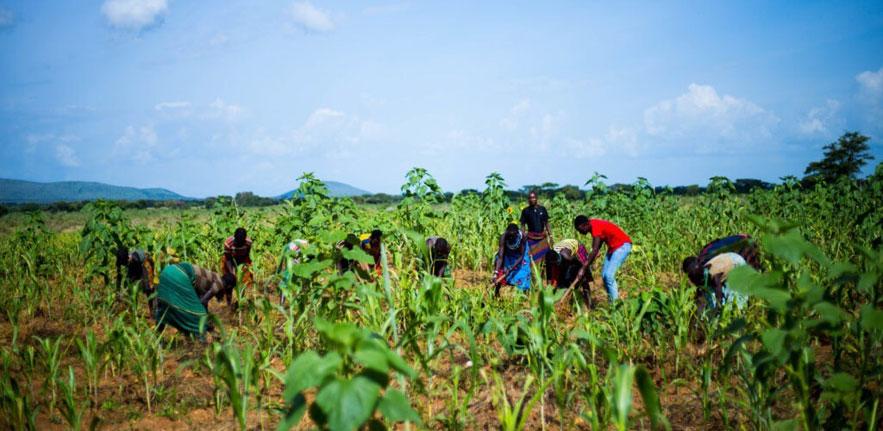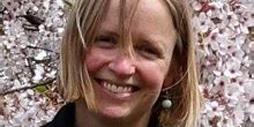
29 June 2021 – Anna Barford, CISL Research Fellow, reflects on why it is critical to engage diverse young people in decision making to find successful pathways to respond to climate change.
- Young people are the least to blame for climate change – and the most vulnerable to its effects.
- Meaningful collaboration with young people on this issue is absolutely crucial.
- Here's how to ensure their voices are heard.
Greta Thunberg is just one of the world’s 1.8 billion young people aged between 10-24, 90% of whom live in developing countries. Having begun her campaign on a cold pavement in Sweden two years ago, she is now a sought-after speaker at UN climate change conferences (though it appears she won’t attend COP26).
Aged 18, Thunberg's knowledge and commitment offer a glimpse of what young people can bring to the table to tackle climate change. But as world leaders prepare for COP26 in November, how much will they listen to the varied experiences and insights of the generation least responsible for anthropogenic climate change yet most vulnerable to its consequences?
In 2019, my co-researchers and I invited 13 young people from the Global South to take part in the Getting By workshop in Cambridge, UK. Three were denied UK visas. They were Rwandan entrepreneur Giselle, Senegalese pig rearer Mark, and a Ugandan women’s rights activist Regina (not their real names). Various combinations of no previous international travel, no track record of international conferences and low incomes seemed to conspire to make these young people appear to be less-reliable visitors – yet their views are exactly what is missing.
Young people are more vulnerable to climate disruptions than older adults who have better paid work, more qualifications and capital, and stronger networks. Climate-related disruption is set to increase alongside the growth of the youth populations in the world's 47 least-developed countries. The ramifications include displacement; lost education; early marriage; a downturn in agricultural livelihoods, and increasing anxiety about climate-related disruption. And this intersects with other disruptions, amongst which COVID-19 and associated responses stand out for their enormous impact upon young people’s lives and livelihoods.
While the Fridays for the Future movement has roused millions of young people in the world’s urban centres, their counterparts in remote rural regions have found little voice, despite experiencing some of the most direct threats of climate change and related poverty. For example, in the arid, pastoralist district of Karamoja in Uganda, which has one of the world’s highest youth populations, young people are experiencing unprecedented swings between flooding and drought within a single growing season. Some adapt by innovating irrigation techniques, but others abandon pastoralism to seek jobs in the service sector. Their perspectives and experiences should inform the high-level climate change meetings in the run up to COP26.
However, moving from a superficial, seemingly decorative engagement with young people to more meaningful collaboration takes time, resources, and a sense of purpose. One NGO that is seeking best practice in championing young people’s voices is Restless Development. Together we ran the ‘Getting By’ workshop in 2019, which sought to engage young people equitably. To be inclusive, recruitment of young participants must be fair, open and transparent and resources must be dedicated to training and participation costs. As well as providing the time, resources, and space for youth-centred interactions, there are structural barriers which mute diverse youth voices. Visas are just one of these barriers – the pre-COVID-19 mobility that many of us took for granted was never universally accessible.
Poor assumptions
The digital divide is another problem. The assumption that ‘everyone has a smartphone’ is inaccurate and marginalizing, yet it is often implicit in the design of youth engagement programmes. Multiple obstacles exclude young people from the internet, including lack of electricity and connectivity. For context, just 11% of people in Burundi, 12% in Chad, and 18% in Malawi have electricity. These barriers must be addressed to enable sustained engagement of excluded youth.
Clearly costs of participation – travel, accommodation, food, childcare – must be met by meeting organisers. Other techniques for equitable engagement include ensuring a critical mass of young people to reduce what can be an intimidating experience. Nurturing young people’s sense of agency enables them to make more constructive inputs. A sole young voice may be quiet when not backed up by others. Ensuring young people are front and centre of events, with roles as panellists and chairs, is also important, and sets the tone for the audience. Good practice includes seeking the first questions from young people (especially women). This encourages other young people to join the discussion. Having observed this in action, I can assure you that it works in situations where young people might otherwise not feel confident to speak. Lastly, it is important to design a schedule that allows young speakers to enjoy the event and the location in which it takes place. As well as helping to improve future lives and livelihoods, equitable engagement in constructive and collective actions can combat eco-anxiety.
The intergenerational injustice of past decision-making demands urgent social, environmental, and economic responses. The Pre-COP26 youth summit in Milan planned for September will be a key moment, especially if the 400 youth delegates (aged 18-29) include and properly support hard-to-reach people from the communities most impacted by climate change. Engaging diverse young people in decision making is critical to finding successful pathways to respond to climate change through both adapting to existing changes and limiting anthropogenic greenhouse gas emissions to minimise future climate disruptions.
Following Joe Biden’s Climate Summit and the welcome return of the United States to the negotiating table, this year could prove pivotal for climate change policy. A huge opportunity will be missed if young people are not fully engaged.
This piece was first published by the World Economic Forum.





